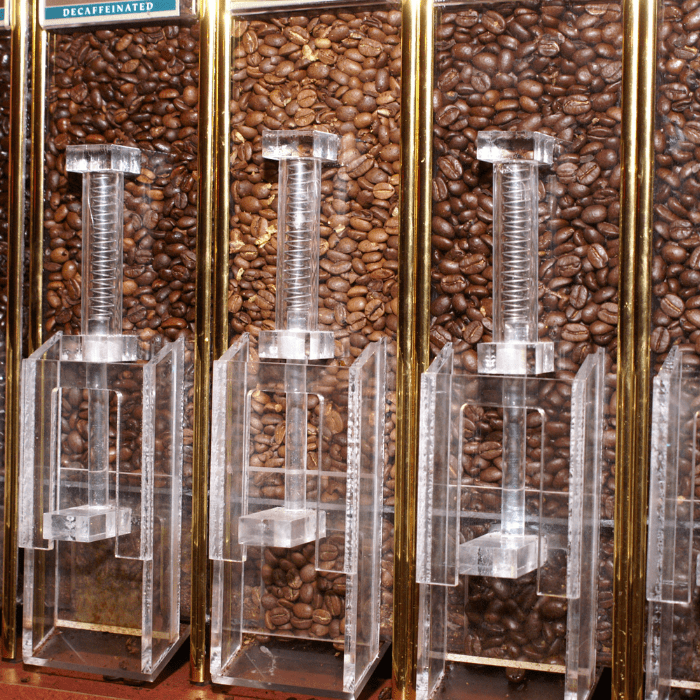Selection of Best-Pre-Ground-Coffee for Cold Brew

Key Takeaways
1. Learn how to make the perfect cold brew coffee at home with expert tips on grind size, roast type, and brewing time.
2. Discover the best coffee beans for cold brew, including single-origin options and the benefits of grinding your own beans.
3. Explore the health benefits of cold brew coffee, which is less acidic and bitter than hot coffee, making it ideal for sensitive stomachs.
4. Cold brew coffee is convenient and refreshing, perfect for hot summer days or when you need a quick and delicious pick-me-up.
For many people, coffee acts as a power and driving source to start their day and function properly. It is the way to turn up a person and perform their daily tasks with full energy and zest.
On a hot summer day, drinking cold brew coffee is one of the satisfying things to do. However, coffee lovers’ love for coffee is not just confined to one season.
There are many ways to consume coffee, whether you like cold brew in the winter or hot coffee in summer.
The majority of people assume that cold coffee is first prepared hot and then cooled down at a lower temperature. However, coffee can be made with no heat, and the output is less acidic coffee, nuttier, and chocolatier item of coffee.
Stay with me as in this article; we will go through what cold brew coffee is and select the best pre-ground for cold brew.
What is Pre-Ground Coffee?

As soon as the beans are ground up, they start to get old quickly. The main difference between whole bean and pre-ground coffee is dependent on
- Flavour.
- Freshness.
- Scent.
There is no need to grind the coffee using pre-ground coffee.
What is Cold Brew Coffee?

Cold brew is a method of brewing coffee, not a method of serving. The cold brew can be served warm.
In the US, historically concentrated cold brew is mixed in boiling water and primarily served as a hot drink.
In many recipes, cold brew is an ingredient.
Iced coffee and Cold brew coffee the same?
The question might come to mind what is a cold brew coffee. Some of you may take it similar to iced coffee. It is, however, a wrong thought.
Iced coffee:
To make this coffee, you will brew coffee by using hot water and allow it to cool. Some people might think this is how an iced coffee is made?
- Japanese method is best to make true iced coffee in which a pour-over coffee set u is used and allow the fresh drips of coffee to on ice cubes.
- This method allows the coffee to cool down quickly and give the aroma and robust flavour you prefer.
Cold brew coffee:
- This coffee never uses hot water.
Steep cold brew coffee grounds in water are used to make this coffee at 70-35 degrees Fahrenheit from 2-24 hours.
Filter the coffee grounds to get a sediment-free coffee. If the coffee is brewed this way, you will have a smooth flavour that is robust and full-bodied, however, with no acidity that sometimes is a problem for sensitive stomachs.
Why Cold Brew?
In summers, cold brew is a great option to get a strong cup of chilled coffee devoid of using tons of ice for chilling coffee.
Cold brewing inclines to chill out a huge variety of changes between varietals and is incredibly forgiving the type of brew, including the elevation of their growth and all its processing.
- At high temperatures, soluble and acids are released, and the flavour is affected.
- Moreover, the coffee brewed at a cold temperature is stale as compared to hot-brewed coffee at a slow rate.
- To avoid this, a batch is made to overfill your addiction to caffeine for the whole week.
- This also cut off 5-10 minutes of your morning.
Benefits of cold brewing:
- Easy to make.
- Balanced taste.
- Extra smooth.
- Slight sweetness.
- Low acidity.
The Equipment:
No equipment is required to brew cold coffee. Anything that can carry some beans and water can brew coffee.
The preferable option is a container with a spout.
To make coffee, cold brew pitchers are designed and are economical.
Recipe of Simple Cold Brew:



There are a lot of ways to make cold coffee brew. However, the main thing followed is a ratio of 1:4. It means four parts of water have 1 part of coffee.
Steps:
- The beans are grounded as per the preferred amount. A coarse grind is used.
- The grinds are put in a pitcher along with 4 cups of water and covered.
- As per your preference, it can either left on the counter or in the fridge.
Key:
The coffee requires longer soaking as compared to counter sitting.
- The counter soaking is for 12 hours and soaking in the fridge for 18 hours.
- The solution is strained and diluted with milk or water as per your taste.
- The ice can be added, and you can still enjoy a good flavour.
- As compared to cubed ice, the round ice melts slowly, and less dilution will be experienced.
What kind of coffee to use for cold brew?
The people are very conscious about their coffee. The choice of brands is also different among people. Cold-brew is not made well with your favourite coffee.
Coffee is a very complex drink more than wine. Many points that make the coffee complex.
- Type of bean.
- Growing area/ region.
- The growth altitude.
- The bean picking.
- Bean processing.
- Roasting of a bean.
- Storage conditions.
These variables are not important for drip coffee makers. Other than traditional methods, water is cooler for making coffee. The brewing time and coarseness both need to be extended.
A fuller body and a better flavour extraction are obtained with these adjustments.
Best Roast for Cold Brew:


The best thing about cold brew is its great taste with a variety of coffee beans. You can either go for light, medium, or dark roast for cold brew.
The taste of the coffee depends on the ground roast and the time for brewing the coffee beans.
Brewing time:
The brewing time is different for different types of roast to get the great taste of the homemade cold brew.
- Dark roast:
- The best type of cold brew coffee, especially with added milk.
- Require less time for steeping.
- The flavour gets too strong if left for a long duration.
- Light roast:
- Delicate, citrus flavour.
- Produce a lovely light cold brew with a cold drip of the coffee maker.
- Medium roast:
- The beans work best with a coarser grind to enhance flavour.
By keeping these points in mind, we will discuss the best types of coffee for cold brew.
The Grind: The Ultimate Variable?
Along with the importance of the best beans for a coffee brew, the size of the grind is equally important. The poor little beans are not appreciated; however, if the grind is all wrong.
Now the question is, what are the best coffee brew grounds?
The coarse grind is like beach sand and is the best grind size for multiple reasons.
- Fast dripping.
- Water drips easily.
- Extract the sweet flavours.
Age of the bean:
During the cold brewing process, there are some unextracted elements.
- For coffee beans, freshness is not an important factor.
Few weeks old beans give you a perfect sweet and caffeinated cold brew coffee.
All the aromas are not extracted by this cold brewing method, and it does not affect the age of the bean.
Best Coffee Beans for Cold Brew:


It is hard to beat the refreshing feeling of a cold brew coffee on a hot summer day. The cold brew is mild and smooth, with less acidity and low bitterness.
This method of cold brewing is the best way to give coffee beans the most astonishing flavour.
All the beans are not equal, as some have more benefit from this method as compared to others.
We will focus on how the taste and aroma are affected by this cold brewing method and which beans make the tasty cold brew coffee.
Tip:
You have to set the brewing time for the grind and roast.
What is the best type of coffee for cold brew?
Single- Origin versus Blend:
The single-origin beans are the best coffee for a cold brew as per most of the coffee experts.
The reason is when preparing the normal coffee like espresso or americano a mixture is sometimes a better option to assist in balancing the features like acidity, bitterness, and sweetness.
Cold brewing methods naturally lowers the acidity and bitterness.
The use of single-origin beans will acknowledge the flavour and origin of beans.
Many blends of coffee are great in taste so take the one as per your choice.
Should you grind your own cold brew coffee grinds or buy pre-ground?
You are either in favour of using pre-ground coffee or against it. The main focus is to grasp all the flavours of the coffee present in the bean.
Boiling the whole roasted coffee bean in hot water results in a very caffeinated and bitter drink which is not liked.
The way of making coffee is changed with time, and we can get all the preferred flavours and the drink that help us to do our daily tasks.
The grounded beans have more surface area to interact with water, and there is a need for more thorough extraction with less brewing time. There are some pros and cons related to pre-ground coffee.
Pros of Pre-Ground Coffee:
- Convenient.
- Best for people with less time.
- Large cans of ground coffee can be purchased and can be used whenever you want to.
- We recommend buying a small amount to get the most flavours from your beans.
Cons of Pre-Ground Coffee:
- One drawback is that a fresh cup of coffee is not possible as the beans lose their aroma once ground.
- The coffee beans have oils that sensitive to other close odours.
- During the roasting process, carbon dioxide produced is also lost.
- Moisture is also a problem.
Conclusion:
If you are a coffee lover, then cold brew is a perfect choice. The coarse grind, along with the medium roast, is used to make cold brew. You should grind your own grounded coffee for the best flavour. The best coffee for cold brew is dependent on your taste and preference.
FAQs:
1. Is cold brew bad for you?
It is an enjoyable alternative to hot coffee and is made easily at home. It has many health benefits. However, it is less bitter and acidic and is used by sensitive people.
2. What colour should cold brew be?
If brewed well, cold brew has a very light colour, and the taste is similar to tea. The coffee should be fruity, very light, and aromatic.
3. Is it ok to heat cold brew?
Yes, the cold brew can be heated. However, the taste may be affected a bit. There is no harm in heating cold brew and consuming it. The addition of hot water to the cold brew minimizes the level of acidity as compared to itself heating the coffee.



